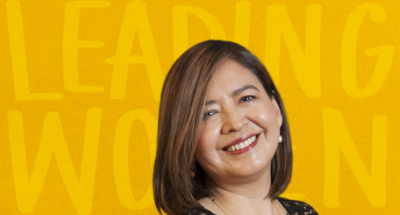
How to teach an entrepreneur to let go
Biotech entrepreneur Juana Lucia Flores-Candia explains that technology has changed the way to mentor chief executives. Here are her three ways to get entrepreneurs to focus....

by Vanina Farber, Patrick Reichert Published 6 January 2022 in Leadership • 5 min read
Impact investing is a vibrant and fast-growing space, but if the industry is to go mainstream and attract a bigger and more diverse pool of investors to social and environmental projects, it will need to come up with new standards and metrics to measure the impact of those investments. Moreover, the compensation schemes of fund managers will need to be overhauled to include incentives for impact to ensure they have a stake in the success of the programs.
Looking ahead, we see three key trends that will shape the industry in 2022 and the years to come.

The size of the impact investing market more than tripled between 2017 and 2019 to $715 billion, according to estimates from the Global Impact Investing Network (GIIN). But this remains a drop in the ocean compared to the $104.4 trillion – at least – of total assets under management at the end of 2019. Of the 1,720 investors that made up this estimated market size, 65% were asset managers, 14% were philanthropic foundations and just 2% and 1% respectively were pension funds and insurance industry players. Importantly, “impact” is not an asset class; it is a management approach that is explicitly integrated into investment decisions. It requires investors to be intentional and impact to be measurable.
In the wake of COVID-19 and building on the momentum of COP26, we believe that societies will continue to pressure financial institutions to divest from unsustainable business models and fossil fuels. The road to recovery in a post-pandemic world will see investors pouring more funds into environmental and social projects.
New regulations such as the EU Sustainable Finance Disclosure Regulation (SFDR) introduce various disclosure-related requirements with the aim of addressing the inconsistency in sustainable products currently provided by financial market participants. Clearly delineating the boundary conditions of impact investing should attract more institutional clients – and their deep pockets – to the sector. Several mainstream banks – including Credit Suisse and UBS – are already establishing dedicated impact vehicles to onboard these new players. We expect to see access expanded to more private investors through larger investment vehicles and products on listed markets.
"Impact” is not an asset class; it is a management approach that is explicitly integrated into investment decisions.
Impact metrics are still mostly focused on backward rather than forward-looking information. Of course, reporting and documenting created impact is vital for the growth of the sector. However, past performance doesn’t necessarily reflect the impact trajectory of a company. Traditional investment decision-making often relies on metrics related to the terminal value of a company. Firms with impact-oriented products or services deliver additional social and environmental value beyond traditional valuation parameters. We believe that impact projections, such as forecasting the expected rise in incomes paid to rural workers by an agribusiness social enterprise, will be increasingly incorporated into company guidance moving forward, especially as impact start-ups move from growth stages to publicly listed firms.
Implementing systematic impact-data capture tools and methods to interpret and project impact data will simultaneously help to create benchmarks for fund managers aiming to tie compensation to impact and attract large institutional investors looking for more standardized and robust data on the impact of their investment portfolios. Forward-looking impact metrics can also help companies align with international standards such as the United Nation’s 17 Sustainable Development Goals or track progress towards climate targets.
The next steps see more mandatory impact reporting processes across the financial supply chain to achieve standardization and ensure the integrity of impact claims. While the growing energy around impact investing is encouraging, the recent flood of products claiming to be “impact” has led to confusion and highlighted the ambiguity within the sector. By establishing the ground rules and providing increased transparency, initiatives such as SFDR and the EU Green Taxonomy can help tackle greenwashing and provide consensus on what counts as sustainable economic activities.

Despite diverse motivations and profiles, all impact investors are united by a desire to generate measurable social and environmental impact alongside financial returns. Although the sector has professionalized rapidly in recent years, it has to a large extent failed to incorporate impact measurement and the use of non-financial incentives as a mechanism to compensate fund managers. The right incentive schemes that link fund performance to impact can help to ensure that investment choices are not biased in favor of financial returns and that impact outcomes are given proper weight in decision-making.
The compensation structure of the traditional private equity and venture capital funds is highly dependent on the financial success of the fund. In nearly all cases, the general partner GP receives approximately 20% of the net capital gain of the fund, called “carried interest”. Impact-based carried interest is computed using the same mechanism as in traditional funds, yet it is only distributed if certain predefined impact goals are achieved in addition to the financial hurdle. For example, a fund may have an impact objective to provide energy access for 10 million households. If the fund fails to meet this impact hurdle, part of their performance compensation could be forfeited (all-or-nothing method). Alternative impact-based compensation methods may scale the achieved results to the impact objective (pro-rata method). For instance, if the fund provided energy access to three3 million households during the life of the fund, the fund managers would be entitled to 30% of the carried interest. Effectively, funds using such a scheme translate achievement levels across different impact objectives into a numeric score, which allows for a linear increase of the variable pay alongside impact results.
While there is no standardized way for funds to measure the impact of their investments, tools such as the GIIN’s IRIS+ are already being widely used to create comparable criteria, scorecards and frameworks for impact assessment and fund performance. An alternative to an impact -based carry is to provide an impact bonus that can be issued at various points in time throughout the life of the fund.
Although the conversation on how to tie compensation to impact is still in its early stages, proponents are advancing internal fund practices to the top of the agenda. For example, Principle 2 of the International Finance Corporation’s (IFC) Operating Principles for Impact Management states that fund managers should consider aligning compensation to the realization of impact objectives. In 2022, we expect to see more funds consider and experiment with compensation incentives for fund managers that are tied to impact deliverables.

Impact investing is part of an important movement towards a financial system that aims to deliver both financial sustainability and measurable improvements towards societal and environmental goals. As the field of impact investing expands in 2022 and beyond, it will likely shape expectations and best practices regarding the funding options of mission-driven organizations. We believe that the trends detailed above can push the sector towards these ideals and reduce risks of impact washing.

elea Professor of Social Innovation, IMD
Vanina Farber is an economist and political scientist specializing in social innovation, sustainability, impact investment and sustainable finance with also almost 20 years of teaching, researching and consultancy experience, working with academic institutions, multinational corporations, and international organizations. She is the holder of the elea Chair for Social Innovation and the Program Director of IMD’s Executive MBA program and IMD’s Driving Innovative Finance for Impact program.

Research Fellow at the elea Chair for Social Innovation
Patrick conducts research at the intersection of entrepreneurship, finance, and social impact, with a particular focus on the mechanisms and logics that investors use to seed investment in social organizations. He is a research fellow at the elea Chair for Social Innovation.

20 November 2023 • by Juana Lucia Flores-Candia in Leadership
Biotech entrepreneur Juana Lucia Flores-Candia explains that technology has changed the way to mentor chief executives. Here are her three ways to get entrepreneurs to focus....

17 November 2023 • by Michael D. Watkins in Leadership
Executives winning promotion must navigate their transition with a balance of humility, respect for legacy, and a vision for the future....

14 November 2023 in Leadership
Henrik Andersen discusses with IMD President Jean-François Manzoni the challenges of navigating supply chain disruptions and soaring raw material costs over the past three years, and why he changed the wind farm...

6 November 2023 • by Brenda Steinberg, Michael D. Watkins in Leadership
Strategic thinking is key to career advancement – but communicating it to others is just as important. Ask yourself these 10 questions to find more ways to demonstrate your strategic abilities to...
Explore first person business intelligence from top minds curated for a global executive audience